Tomas Kopic, Executive Vice President of Ammann’s Heavy Equipment Division, is responsible for the company’s compactors and asphalt pavers. He recently discussed the founding principles and how the company strives to make each new generation than the last.
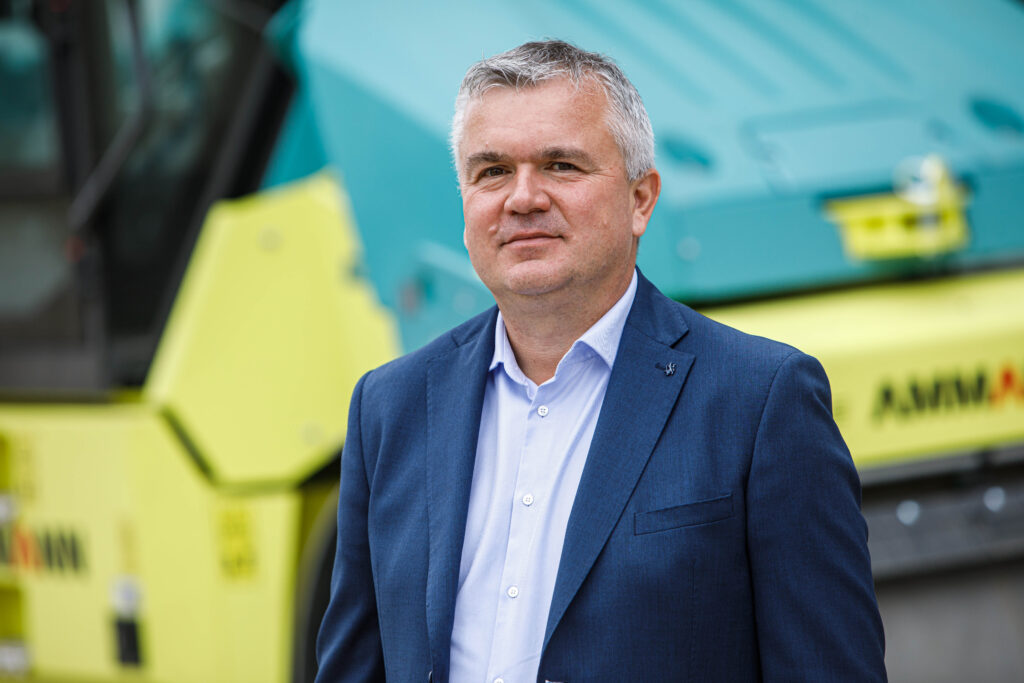
New product development is the lifeblood of the roadbuilding businesses. How does Ammann focus its process to continually develop relevant products?
First, we ensure we have a keen understanding of the challenges our customers face. We accomplish this by communicating with our customers, in a variety of ways.
The Ammann team is a valuable resource as well. We have extensive experience and expertise in the roadbuilding industry and every year visit hundreds of jobsites in all corners of the world. This is important because some common themes emerge. In addition, solutions that are successful in one region can often be applied to others.
Then, we talk about how to solve those problems … how to deliver value. We do that through three key concepts: productivity, ergonomics and serviceability.
Let’s start with productivity. What efforts are you making on this front?
Productivity is about achieving compaction in the fewest possible passes of the roller. Our main effort is Ammann’s proprietary Intelligent Compaction system, ACEforce. It monitors compaction progress in real time so operators know if their targets have been met.
This brings enormous benefits in terms of productivity and quality. If compaction has been achieved, then the operator can move onto a different area of the jobsite. Without the knowledge ACEforce brings, that operator might continue compaction – and every additional pass would be a waste of labor, fuel and even machine life. It would result in unnecessary emissions, too.
We talk a lot about eliminating those passes – as we should; it’s a significant benefit. An often-understated aspect of ACE is the over compaction it prevents. I’m not just talking about the associated waste, but the damage over compaction can cause to the materials.
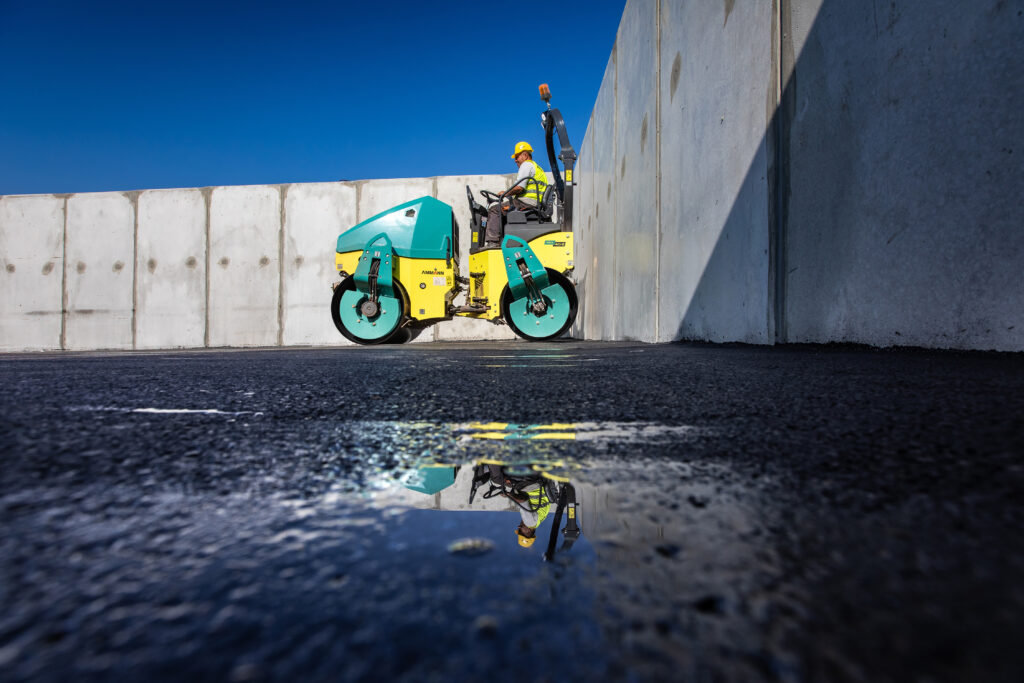
You also referenced ergonomics. What exactly do you mean by that term, and how do you provide it?
Ergonomics is the concept of bringing efficiency to the working environment. That can be accomplished in a number of ways … having controls on armrests, for example. The operator doesn’t have to hunt for them or stretch to access them.
Ergonomics includes visibility, too. Our heavy equipment has exceptional sight lines. This is always considered a safety effort – and it is, to be sure. But another benefit is that the operator doesn’t have to stretch to see. While that might not sound like much, it certainly adds up over the course of a shift.
Ergonomics is about efficiency, but it’s closely linked to comfort, too. An operator who can see without stretching, and easily reach controls, is going to be more comfortable.
Some in the industry on occasion question the importance of comfort. Their argument is that they pay the operator to work, not necessarily to be comfortable. At Ammann, our reply is that comfort is really delivering efficiency – and everyone cares about efficiency. Preventing reaching and stretching makes operation more comfortable but also more efficient. Efficiency also is synonymous with productivity. The easier a machine is to control, the more productive it will be.
The convenience of controls has an impact on quality, too. A smoothly running machine will provide better quality, which reduces the likelihood of costly rework. On jobsites with bonuses, quality has a direct correlation on profit.
Finally, I would tell customers that comfort keeps operators more alert and therefore more productive – and safer, too.
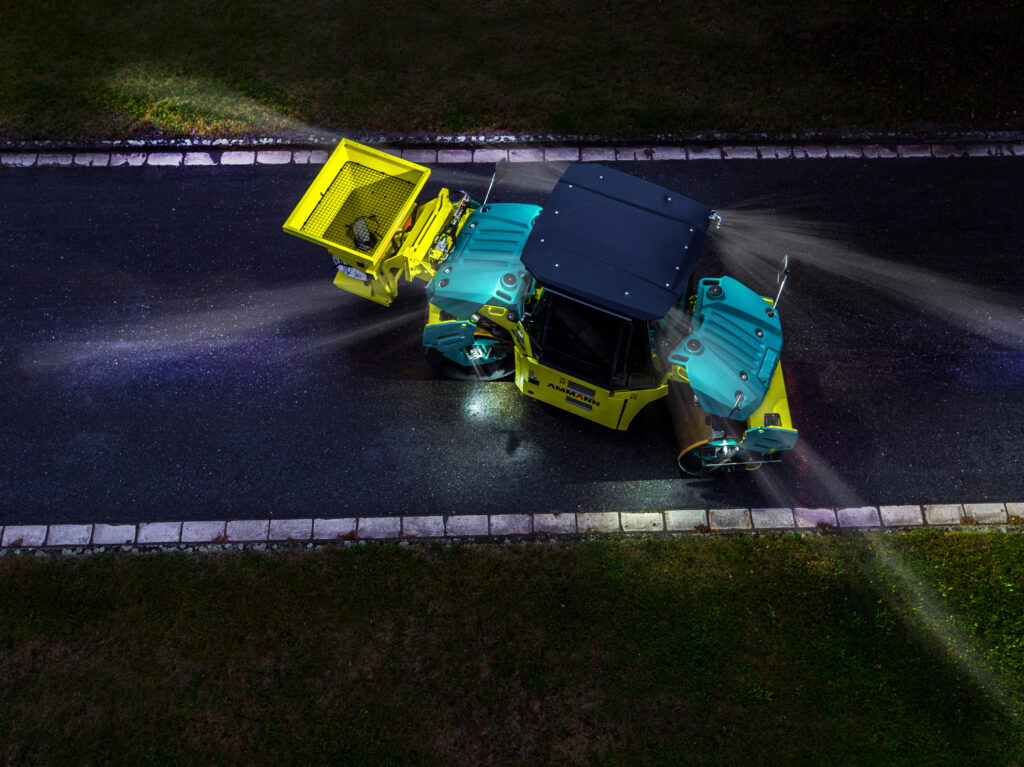
The third factor you referenced is serviceability. Can you explain its importance?
By serviceability, we mean, “How easy is it to service this machine? What can we do make preventive maintenance less time consuming and less costly?” Key efforts on this front are extended intervals, accessibility and longer component life.
Extending service intervals have an enormous impact. Think of the savings if you only have to change a fluid every six months, instead of every three. You’ve cut the service crew’s work in half. You’ve done the same to the costs of purchasing and disposing of the fluids, too.
Accessibility is another cost-saver. The better the accessibility, the quicker the service can be completed – and the faster the operator can get back to running the machine, or the technician can move onto another project.
We provide this accessibility through some creative engineering. Our soil compactors utilise a tiltable cab and rear hood that makes engine and hydraulic components easy to reach. In addition, hydraulic components are centralised for convenience.
That wide-opening hood means the engine compartment can be reached from the ground. Therefore a technician can change the oil while on the ground. Easy-to-open side panels help technicians reach the drive and vibration components, and greasing points are conveniently located. All of this saves a great deal of time.
Last but certainly not least, we constantly strive to make our components more robust. This includes rethinking design and engineering. These efforts are having real consequences – component life is extended, and therefore machine life is, too.
What can be more convenient, and more cost effective, than not having to replace components – and ultimately making a heavy roller last longer?
You put a great deal of emphasis on maintenance. Is that really a product differentiator?
It is. At Ammann, we have a very simple belief about maintenance: the easier we make maintenance for the machine operator, the higher the probability the work will be completed.
The basic idea is to reduce the need for this work by using maintenance-free components or grouping access points for speed and convenience. Contractors realise that there is a direct connection between maintenance/serviceability and costs. They are starting to look at the lifetime costs of owning a machine, not just the purchase price.
It seems as if some of these initiatives would make for a greener jobsite, too.
Exactly. Preventing spills might be the lowest hanging fruit. We’ve designed and located fluid ports to eliminate spills – and it works. Problem solved. Extended intervals of course have their own impact on sustainability.
These efforts fall under a new initiative at Ammann called ECOdrop. It started with our soil compactors, and now is being integrated across the entire heavy compaction product line. ECOdrop principles are focused on all aspects of machine maintenance, serviceability and environmental friendliness. They provide a great deal of cost savings, too.
The principles are things we’ve already talked about, such as limiting the need for service. It includes reduced fuel usage, too. We’ve created a more organised, centralised approach under the ECOdrop umbrella. You can see some great examples of the benefits if you look at Ammann Single-Drum Rollers.
We’ve reduced oil for hydraulics up to 26% … and reduced oil for vibratory bearings up to 10%. A variable fan drive provides efficient cooling, which reduces emissions. Automatic rpm setting and intelligent drive lever functions improve fuel consumption up to 22%.
In addition, the hydraulic oil and the filter now need to be changed only once ever 2,000 hours. We’ve cut in half the number of times the oil and filter have to be replaced – and lessened the volume of fluids needed.
The key working tool on the soil compactors, the vibratory drum, was significantly redesigned for exceptional performance and ease of maintenance. No special oil is required for the vibratory system, which is a cost saver. In addition, the amount needed has been reduced by 10% compared to the previous generation.
A new automatic engine rpm management system improves fuel consumption. It is integrated directly into the main machine control system and automatically adjusts engine settings, depending on the jobsite conditions.
I’ve just rattled off a number of sustainable benefits, and that’s just for a single product. The impact will grow exponentially as ECOdrop is expanded across the product line.
What future green initiatives are in store?
We are creating an “E-Mission” initiative, which focuses on efficiency, ecology, economy, excellency and electrification.
E-Mission fits in well with our overall sustainability efforts. We are committed to exploring every means possible to reduce the carbon footprint of our products. That includes finding more efficient ways to burn fuel, which of course has an impact on emissions.
Utilising advanced technology also minimises the use of natural resources and positively impacts emissions.
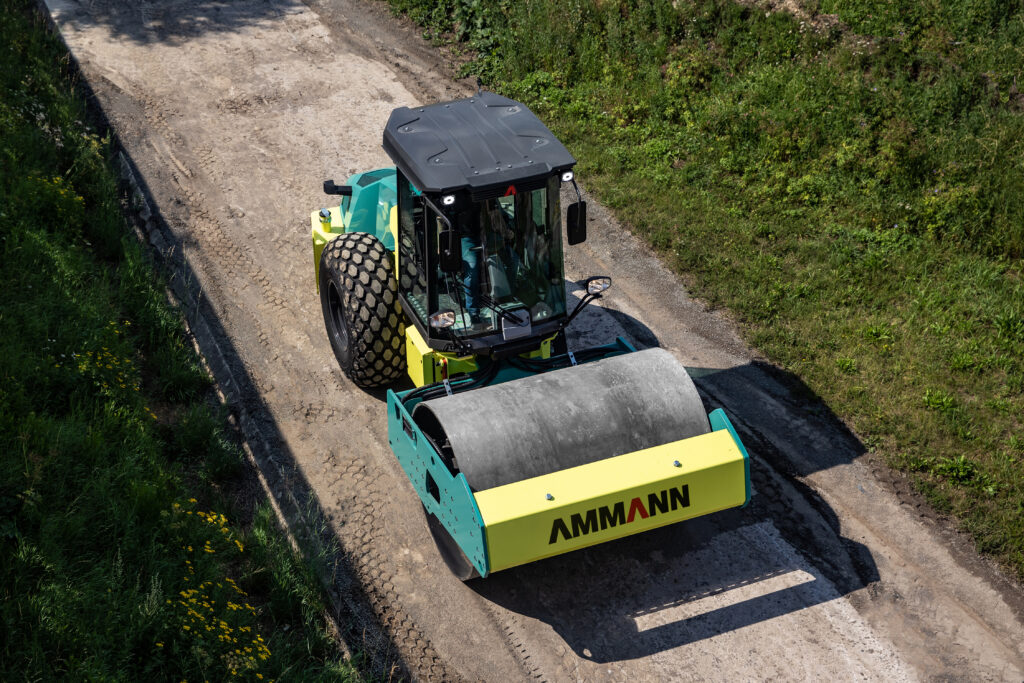
Let’s specifically talk about asphalt compaction. What is the future direction of those products?
It’s all about ACE and everything it brings. ACE helps even inexperienced operators succeed, which is increasingly important given changes in the global workforce.
ACE also monitors compaction so operators can focus on machine safety, performance and productivity. Ultimately, we’re talking about technology that greatly impacts improving the quality of the asphalt pavement.
How is Ammann addressing the trend toward increased digitalisation?
Primarily through advanced technologies of semi-autonomous or autonomous Continuous Compaction Control (CCC) systems. It’s also done by offering GPS for online jobsite controls or machine-to-machine communication – and through telematics systems that enable detailed fleet management.
The CCC systems, whether semi or fully autonomous, are key to quality control. It requires measurement and being able to define the target and monitor progress toward reaching it. We have the most advanced system in ACE, and our customers benefit greatly from it. Moving forward, customers will have a choice between a semi-autonomous system (ACEforce) or something that is completely autonomous (ACEpro).
News is coming on the next generation of ACE, likely during bauma 2022. It will be the fourth generation of the system.
What is new with fleet management?
An updated ServiceLink is our latest effort in terms of machine life-cycle control. ServiceLink is a telematics system that enables our clients and end-users to have a complete overview of their machines, their location and upcoming service needs.
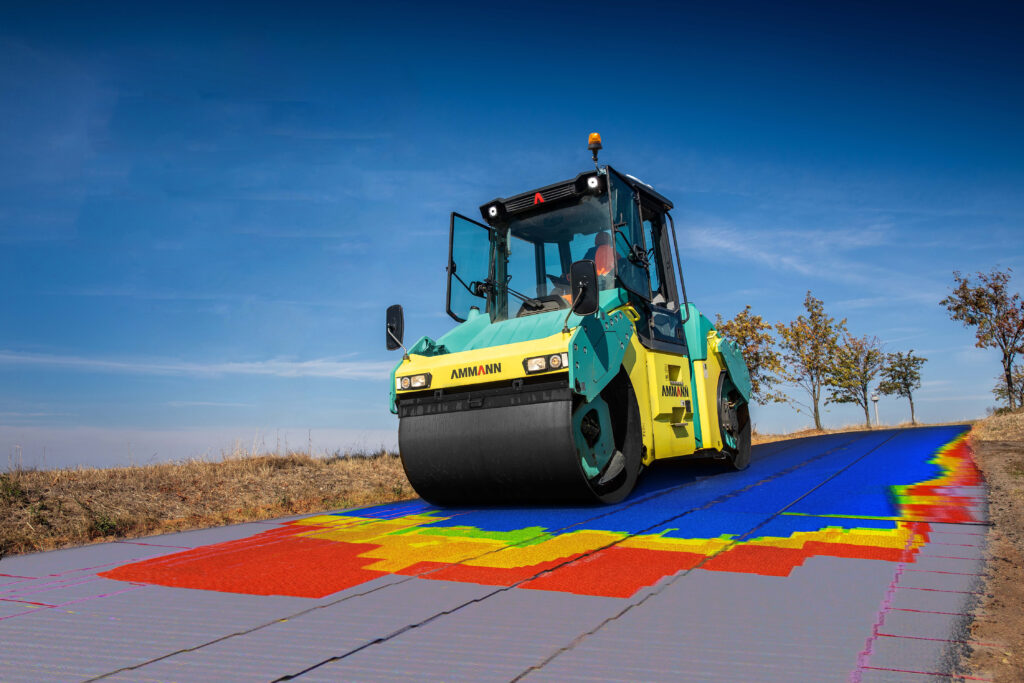
What regions are showing strength, and what areas do you see as the best opportunities going forward?
The past year has of course brought difficulties, but Ammann was able to maintain – and in some cases strengthen – our positions in markets where we are historically very strong, such as Europe and Russia. We also are seeing growth in additional markets, particularly the U.S.
There are challenges ahead, both globally and regionally. Some governments have proven unpredictable in the face of adversity. That behaviour never helps. In addition, supply chain and labor shortages are having an impact in all regions, though some are hit harder than others.
In the short- to mid-term, we expect Europe to support more robust environmental efforts and the U.S. to strengthen its infrastructure. Most of the rest of the world will remain in standby mode as the key issues, such as the supply chain challenges, are resolved.
Source: Ammann
 Copyright 2020 All rights reserved.
Copyright 2020 All rights reserved.